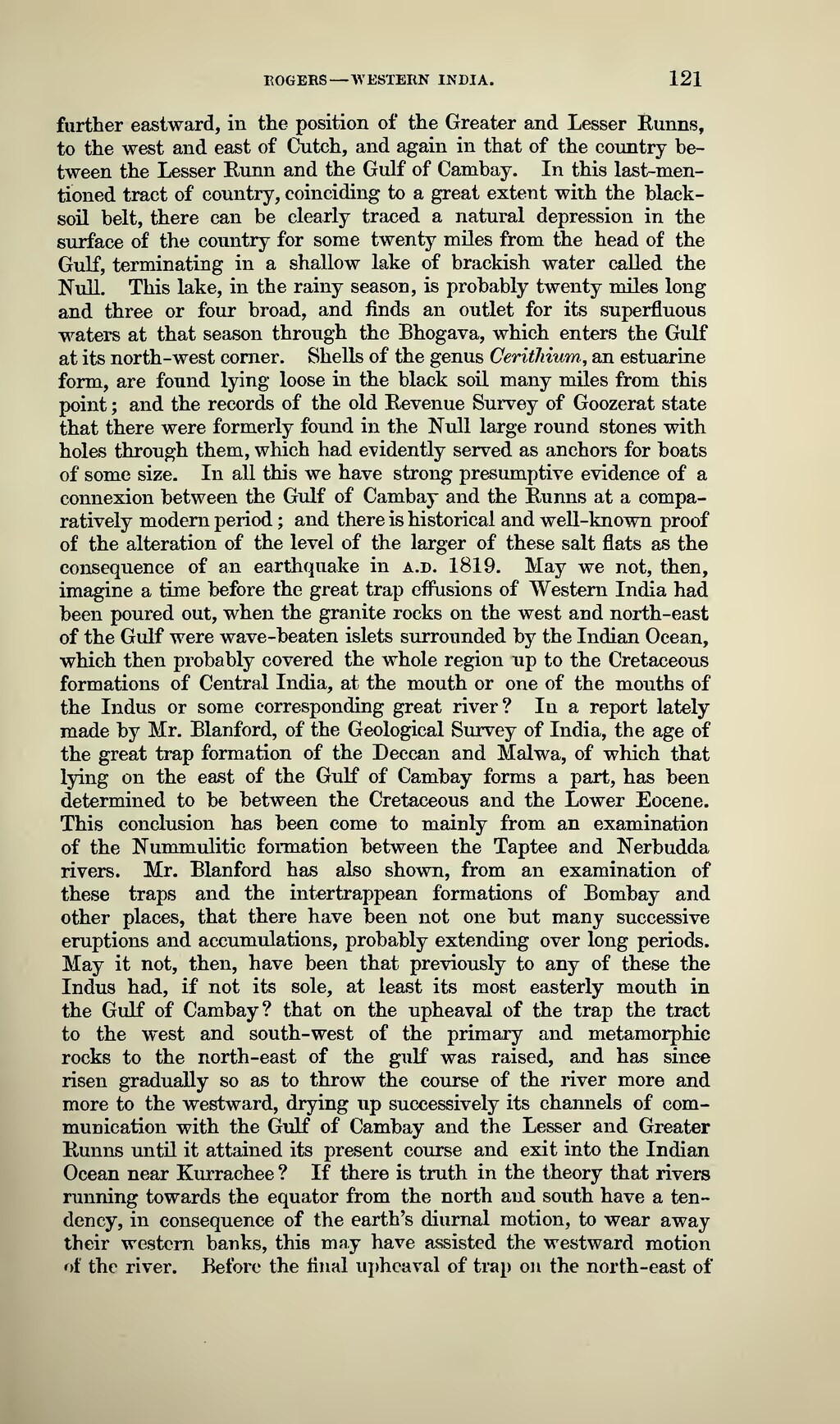ROGERS — WESTERN INDIA. 121
further eastward, in the position of the Greater and Lesser Runns,
to the west and east of Cutch, and again in that of the country between
the Lesser Runn and the Gulf of Cambay. In this last-mentioned
tract of country, coinciding to a great extent with the black-soil
belt, there can be clearly traced a natural depression in the
surface of the country for some twenty miles from the head of the
Gulf, terminating in a shallow lake of brackish water called the
Null. This lake, in the rainy season, is probably twenty miles long
and three or four broad, and finds an outlet for its superfluous
waters at that season through the Bhogava, which enters the Gulf
at its north-west corner. Shells of the genus Cerithium, an estuarine
form, are found lying loose in the black soil many miles from this
point; and the records of the old Revenue Survey of Goozerat state
that there were formerly found in the Null large round stones with
holes through them, which had evidently served as anchors for boats
of some size. In all this we have strong presumptive evidence of a
connexion between the Gulf of Cambay and the Runns at a comparatively
modern period; and there is historical and well-known proof
of the alteration of the level of the larger of these salt flats as the
consequence of an earthquake in a.d. 1819. May we not, then,
imagine a time before the great trap effusions of Western India had
been poured out, when the granite rocks on the west and north-east
of the Gulf were wave-beaten islets surrounded by the Indian Ocean,
which then probably covered the whole region up to the Cretaceous
formations of Central India, at the mouth or one of the mouths of
the Indus or some corresponding great river? In a report lately
made by Mr. Blanford, of the Geological Survey of India, the age of
the great trap formation of the Deccan and Malwa, of which that
lying on the east of the Gulf of Cambay forms a part, has been
determined to be between the Cretaceous and the Lower Eocene.
This conclusion has been come to mainly from an examination
of the Nummulitic formation between the Taptee and Nerbudda
rivers. Mr. Blanford has also shown, from an examination of
these traps and the intertrappean formations of Bombay and
other places, that there have been not one but many successive
eruptions and accumulations, probably extending over long periods.
May it not, then, have been that previously to any of these the
Indus had, if not its sole, at least its most easterly mouth in
the Gulf of Cambay? that on the upheaval of the trap the tract
to the west and south-west of the primary and metamorphic
rocks to the north-east of the gulf was raised, and has since
risen gradually so as to throw the course of the river more and
more to the westward, drying up successively its channels of communication
with the Gulf of Cambay and the Lesser and Greater
Runns until it attained its present course and exit into the Indian
Ocean near Kurrachee? If there is truth in the theory that rivers
running towards the equator from the north and south have a tendency,
in consequence of the earth's diurnal motion, to wear away
their western banks, this may have assisted the westward motion
of the river. Before the final upheaval of trap on the north-east of
